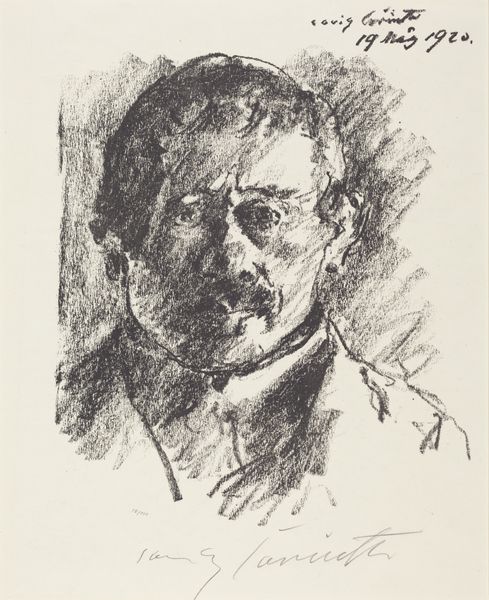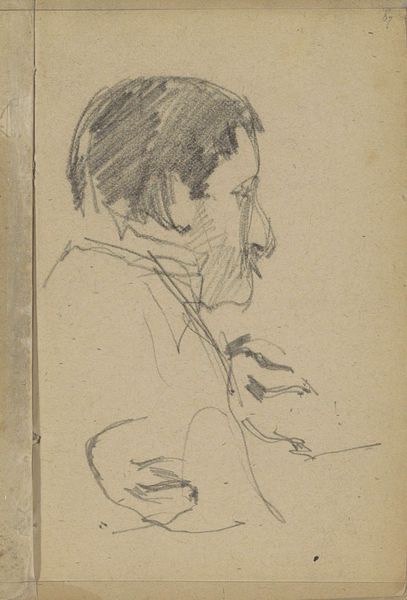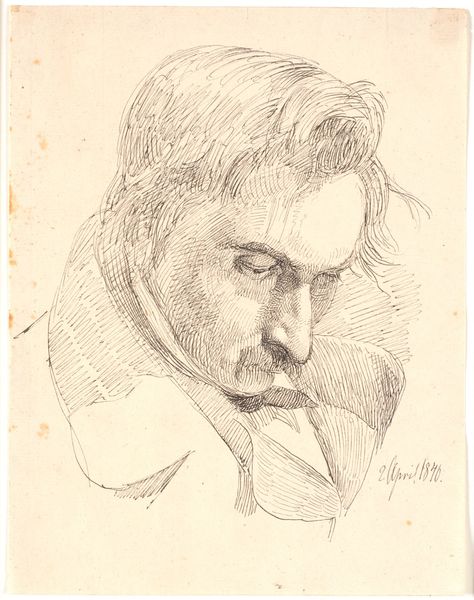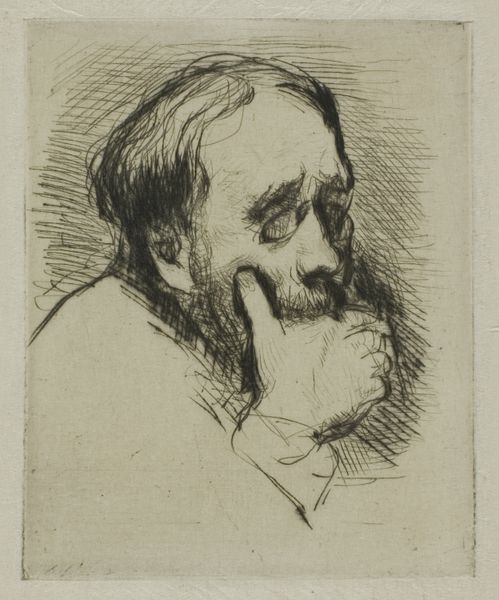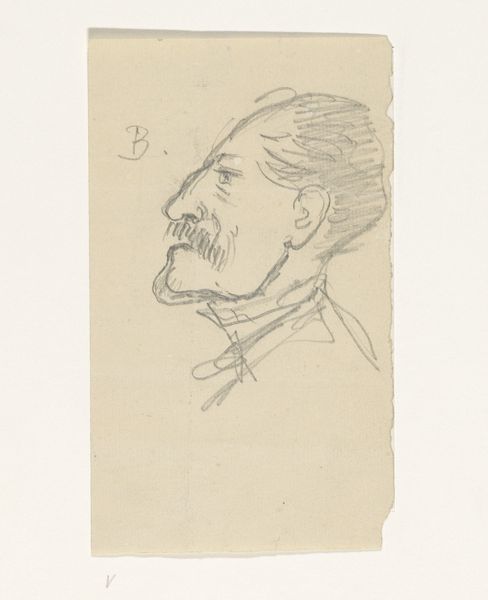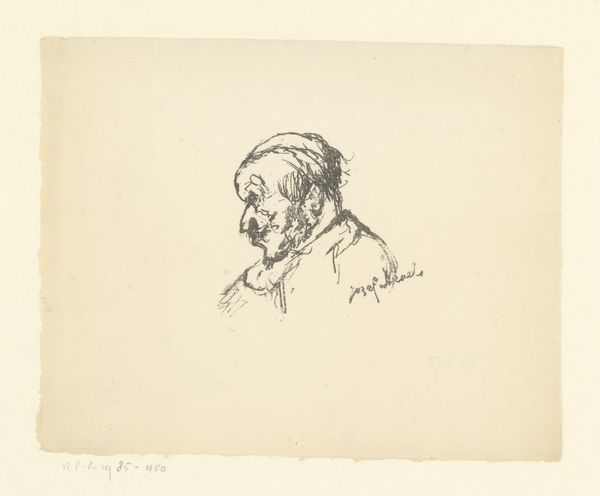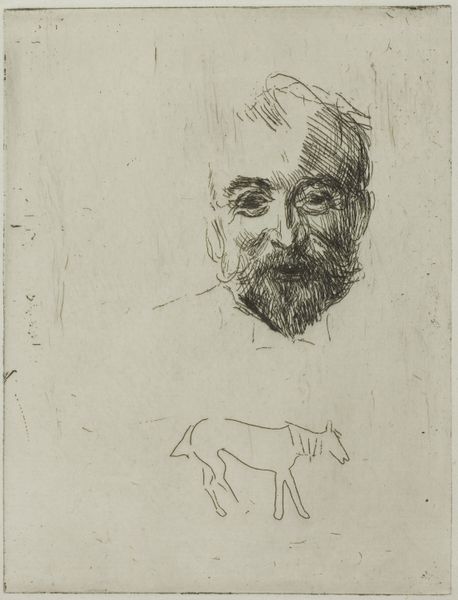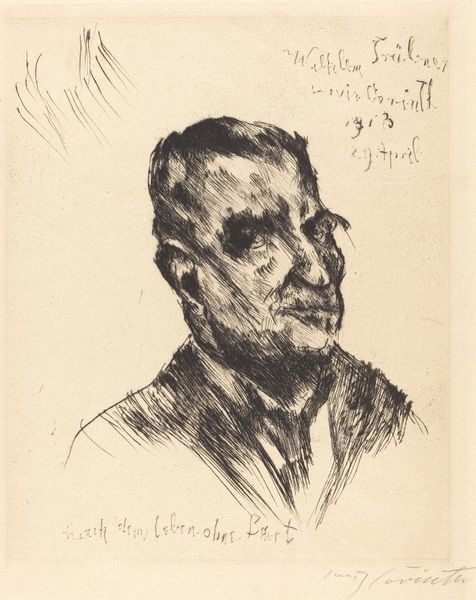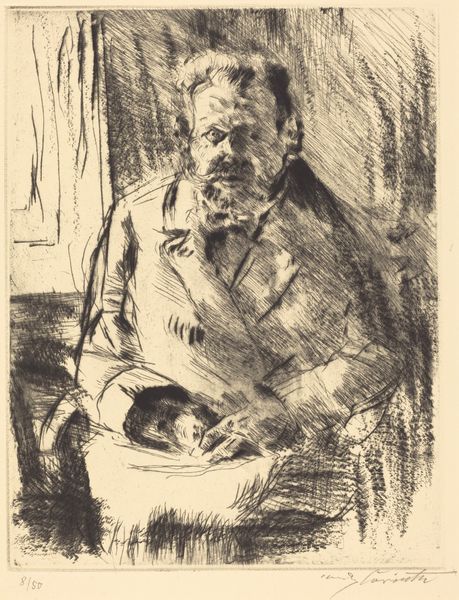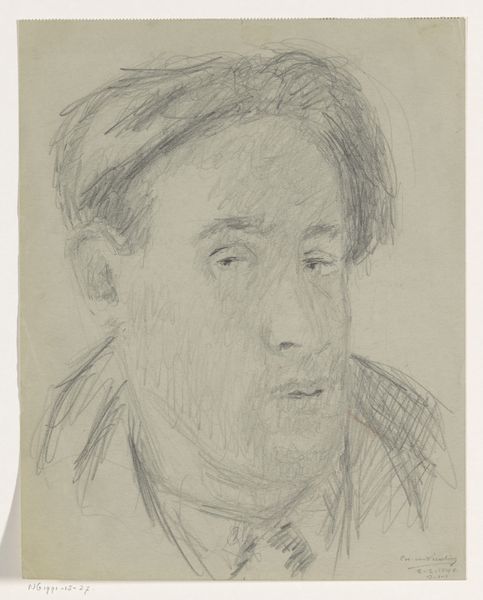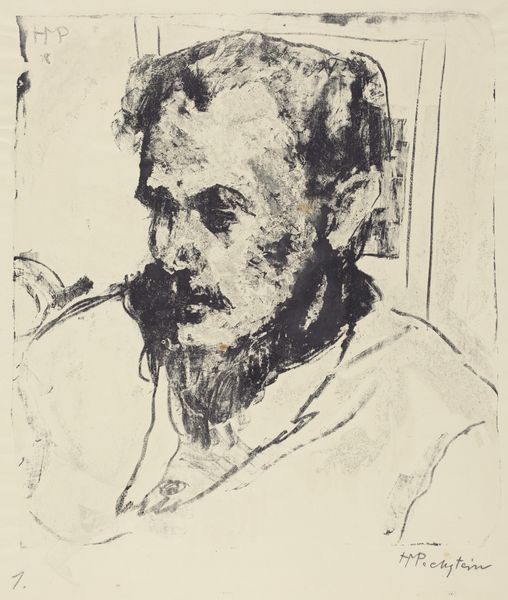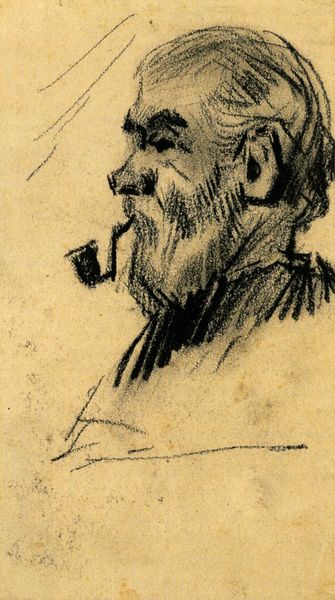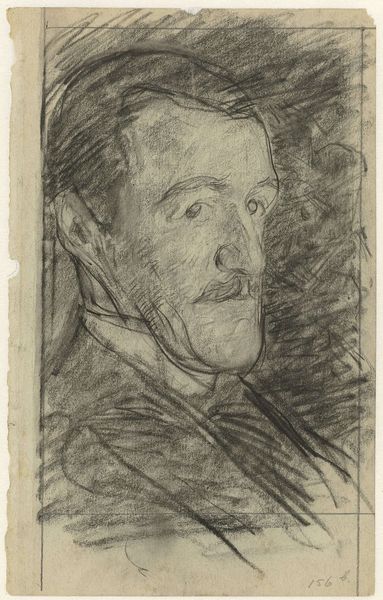
drawing, print, etching
#
portrait
#
pencil drawn
#
drawing
# print
#
etching
#
figuration
#
line
Dimensions: 72 mm (height) x 70 mm (width) (plademaal)
Curator: Looking at this striking etching from between 1927 and 1929, we see a portrait by Alfred Simonsen. It’s titled "Portræt af Kaj Eistrup" and resides here at the SMK, Statens Museum for Kunst. Editor: There’s an incredible stillness here, almost melancholy. The man’s head is bowed, lost in thought perhaps? It feels intensely personal. Like catching someone in a private moment of reflection, you know? Curator: Absolutely. Portraits, especially during this period, often served more than just commemorative functions; they were statements of identity and social standing. Here, however, there’s a certain ambiguity, maybe even a deliberate subversion of those traditional power dynamics. Editor: I love how the artist uses the etching technique. The cross-hatching gives it texture and depth, like you could reach out and feel the stubble on his chin or the weight of his thoughts. And the minimal background really throws the focus onto the face, all the lines drawing my eyes in. Curator: Etching as a medium does have its own fascinating history too. It allowed artists to produce multiple impressions, which democratized access to art in a way that painting simply couldn't. But it's equally about control, allowing for nuanced control of light and shadow, that cross-hatching to build form. Editor: It’s like whispers on the paper, revealing the person gradually. The downward gaze does pull you in. I feel his vulnerability, not grandeur. Makes you wonder, what was going through his mind as he was being drawn? What did Simonsen see in Eistrup? Curator: These works existed within a specific social and artistic framework. Examining the political climate, and perhaps knowing more about the subject of the portrait – his role and social interactions in the artistic community in Copenhagen would illuminate so much more for us about the intent. Editor: It's amazing how just a few lines can evoke such depth. A quiet intensity, an unburdening even, of the portrait's traditional ego. It invites us to contemplate not just the subject but our own internal landscapes, no? Curator: Exactly. So it’s more than likeness or representation, it is the historical narrative being conveyed by both the subject and creator in a wider cultural context. Editor: A simple but stirring slice of life caught with gentle lines. Curator: A testament to art’s reflective capability, isn't it?
Comments
No comments
Be the first to comment and join the conversation on the ultimate creative platform.
